A 100th birthday celebration attracts some very U of C scholars—and very U of C conversation.
By Amy Braverman Puma
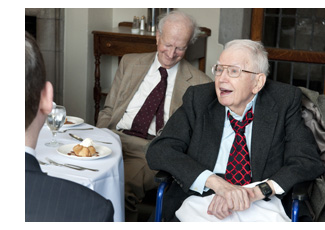 I took a spot in the back of the Quad Club solarium, leaving room for A-list guests closer to the luncheon's honoree, Nobel Prize–winning economist Ronald Coase. Still, in the end pretty much everyone who’d come to celebrate Coase’s 100th birthday was A-list, and my out-of-the-way table filled with notables including economist Allen Sanderson, University provost Thomas Rosenbaum, and, sneaking in just after the salad was served, 2007 Nobelist Roger Myerson.
I took a spot in the back of the Quad Club solarium, leaving room for A-list guests closer to the luncheon's honoree, Nobel Prize–winning economist Ronald Coase. Still, in the end pretty much everyone who’d come to celebrate Coase’s 100th birthday was A-list, and my out-of-the-way table filled with notables including economist Allen Sanderson, University provost Thomas Rosenbaum, and, sneaking in just after the salad was served, 2007 Nobelist Roger Myerson.
Myerson was still pulling in his chair when economist and New York Times columnist Casey Mulligan shot him a question: “Roger, do you think we should be in Libya?” It took Myerson only a moment to collect his thoughts and respond that, from his perspective, Arab-League and UN approval for the no-fly zone made it a justifiable intervention.
Meanwhile, Sanderson was delighted to be sitting next to Rosenbaum, he told the physicist, because he had a burning question—about the physics of kids’ soccer. “At my granddaughter’s games,” Sanderson said, “whenever the goalie gets the ball, she throws it. Wouldn’t kicking be better?” Yes, Rosenbaum agreed: legs are stronger than arms, so kicking, although less accurate, would get the ball farther down the field.
Ten minutes before the luncheon was scheduled to end, I worried aloud that perhaps no one would speak and I’d have nothing to write about Coase. Myerson generously launched into stories about the Law School professor emeritus, who had turned 100 this past December but whose University celebration had been postponed until late March because it had been too cold for him to venture out. Myerson recalled how, after a 2001 dinner to honor then-incoming University President Don Randel, everyone had left but the Myersons and the Coases, who stayed and talked awhile. On the Myersons' way home, they agreed that, should they live into their 90s, they hoped to be as sharp and interesting as the Coases.
Soon economist Gary Becker, AM’53, PhD’55, a Nobel Prize-winner himself, did get up to speak. He told the room how Coase had been born in England, attended the London School of Economics, and later came to the United States, first to the East Coast but in 1964 settling at the University of Chicago Law School. “It was the first law school, to my knowledge, that had an economist teaching full time,” Becker said. Law School professor Aaron Director had started the Journal of Law and Economics in 1958, and after Director retired in 1965, Coase “really made it into a major and influential journal.” Becker noted that when he first met Coase in 1970, Coase “didn’t say a lot, but I began to realize that every time he did say something, it was really profound.”
Becker discussed Coase’s “four most important papers,” including his 1937 article “The Nature of the Firm" and 1960’s “The Problem of Social Cost,” which was cited when Coase won the 1991 Nobel. When that paper, about bargaining, social costs, and efficiency, was published, Becker said, “I read it, and it seemed revolutionary. I called [George] Stigler [PhD’38] and said, ‘This seems like an important paper.’ George said, ‘Yes, but a lot of people around here don’t think it’s correct.’ I read it again. It seemed correct to me. I assigned it to my class.” The paper laid out what’s now known as the Coase Theorem (although so many people misinterpret it that there's an academic paper (PDF) on whether economists teach it correctly).
“He’s still working,” said Becker, noting that Coase has coauthored a book coming out later this year, How China Became Capitalist (Palgrave Macmillan).
After a tasty chicken meal, Sanderson remarked that we were having “an intimate lunch with four Nobel Prize winners.” Along with Coase, Becker, and Myerson, 1995 laureate and Chicago professor Bob Lucas, AB’59, PhD’64, was also at the lunch. Intimate indeed: afterward I felt like I knew some of them myself.
After Gary Becker (left) addressed the room, Ronald Coase made brief remarks at his 100th birthday lunch.
Photo by Lloyd DeGrane
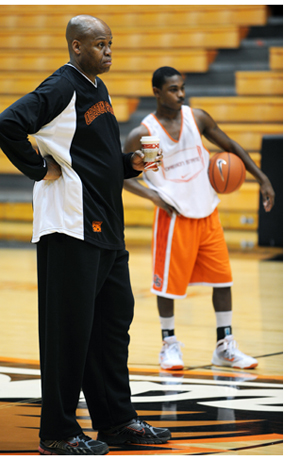

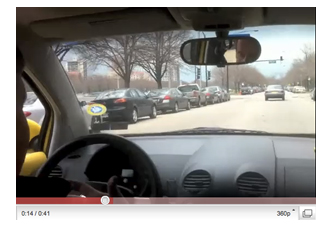
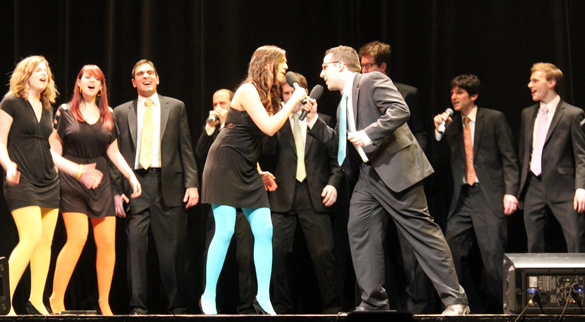
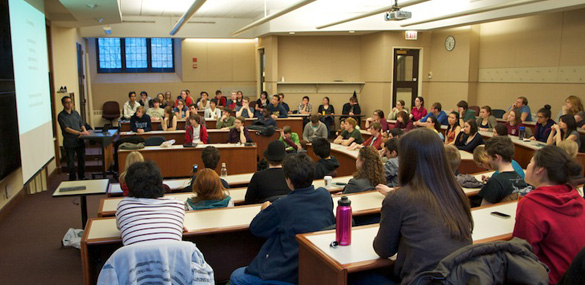
 I took a spot in the back of the Quad Club solarium, leaving room for A-list guests closer to the luncheon's honoree, Nobel Prize–winning economist
I took a spot in the back of the Quad Club solarium, leaving room for A-list guests closer to the luncheon's honoree, Nobel Prize–winning economist 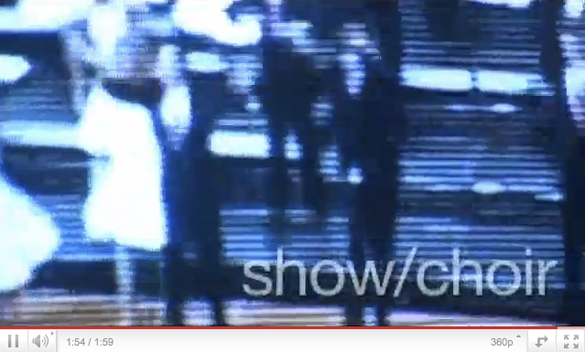
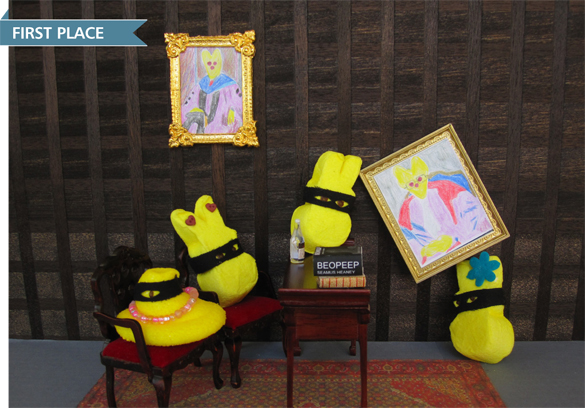
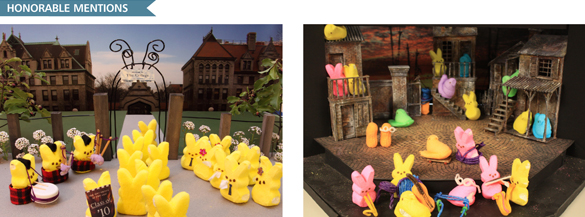
 When you’re in Chicago, what happens to the excavation site at Tell Edfu?
When you’re in Chicago, what happens to the excavation site at Tell Edfu? The site is in the middle of the modern town of Edfu, next to the Temple of Edfu, which is a major tourist attraction. So it actually is located within a protected area that’s marked as an ancient site. The local inspector and the people who are part of the antiquities organization have an on-site office. There’s a fence around it; people can’t really access it. In that respect we’re really lucky compared to sites in the desert where you have no fence and no protection. At Edfu there is also usually a police presence, mainly for the tourists, but they obviously stop anybody from walking on the tell, on our excavation site.
The site is in the middle of the modern town of Edfu, next to the Temple of Edfu, which is a major tourist attraction. So it actually is located within a protected area that’s marked as an ancient site. The local inspector and the people who are part of the antiquities organization have an on-site office. There’s a fence around it; people can’t really access it. In that respect we’re really lucky compared to sites in the desert where you have no fence and no protection. At Edfu there is also usually a police presence, mainly for the tourists, but they obviously stop anybody from walking on the tell, on our excavation site.